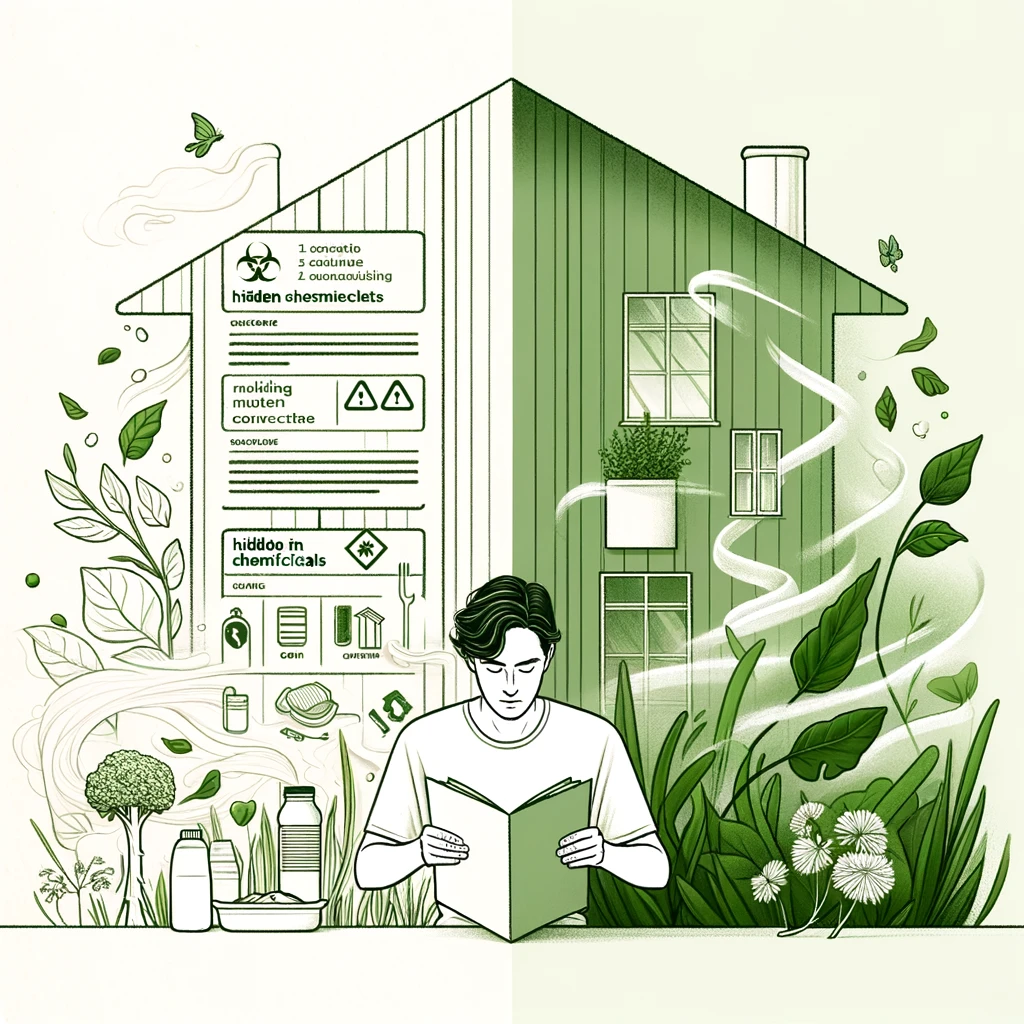Architectural Health & Resilience: Lessons from a Peanut Label
One afternoon, as I sat with my daughter, sharing a simple snack of peanuts, a moment of unsettling realisation unfolded before me. Out of curiosity, I glanced at the ingredients list on the packaging. Four components were listed: peanuts, salt, oil, and a number. Oil. A vague and ambiguous term covering a vast range of possibilities—some healthy, some harmful. And that number. It seemed harmless, a minor addition, just another part of modern food processing. But something gnawed at me.
I decided to look it up.
What I found was disturbing. That number was a known toxin, a preservative deemed acceptable in minuscule doses. Science had assured us it was safe—technically. But the thought of knowingly consuming even a fraction of poison felt deeply wrong. More so, the idea of my daughter consuming it, of this invisible threat slipping into our bodies without a second thought, was intolerable. That was the last time we ever touched that brand of peanuts.
Yet, I had never told this story before. And because of that silence, countless others continued to eat that same snack, unknowingly consuming the same toxin. That is the trouble with labels—they can mislead by omission of detail, hiding behind vague terminology, making us feel safe when, in reality, we are anything but.
Then the realization expanded.
What if the same principle applied to our built environment? How often do we question the materials that shape our homes, our workplaces, our schools? Just as I had assumed my peanuts were harmless, we assume our buildings—the spaces that cradle our lives—are designed with our well-being in mind. Yet, hidden within the walls, floors, and ceilings, there are countless toxins. Chemicals in paints, adhesives, synthetic materials—all slowly leaching into the air we breathe, the surfaces we touch, our very existence.
In our relentless pursuit of progress, we have sacrificed our well-being to convenience, to efficiency, to an industry that prioritizes cost and speed over the health of its inhabitants. We trust that the people who manufacture our materials would not knowingly harm us. But that is not the case.
Even as an architect, I trusted our material suppliers to do better for us—to provide safe, high-quality materials that supported human health rather than compromised it. I believed the marketing, the sustainability claims, the certifications. But over time, I have realized how often these promises are nothing more than greenwashing. We don't need clever branding. We need honest facts about honest materials and how they will affect our health and our lives. This realisation has forced me to question everything, to dig deeper, and to demand better—not just for myself, but for those who will inhabit the spaces we create.
The built environment plays a crucial role in shaping our health. Studies have shown that indoor air quality can be more polluted than the air outside due to volatile organic compounds (VOCs) released from materials we barely consider—paint, carpet, furniture. Over time, exposure to these pollutants contributes to chronic illnesses, respiratory conditions, and even cognitive decline. We live, work, and sleep in buildings that slowly diminish our health while we remain oblivious to the root cause.
The answer is both simple and radical. A return to the basics. A reconnection with nature—not as a luxury, but as a necessity. Fresh air, natural light that aligns with our circadian rhythms, the restorative power of the outdoors. The materials we use should be real, honest, and free of pollutants—wood, stone, clay, and lime, breathing as we do, shaping environments that nourish rather than deplete.
Biophilic design—rooted in our intrinsic connection to nature—demonstrates that integrating natural elements into our spaces reduces stress, enhances creativity, and fosters well-being. Imagine a world where buildings are designed not as lifeless boxes but as ecosystems, pulsing with life, filtering air, responding to the changing rhythms of the day. Imagine homes that breathe, adapt, and support human health rather than degrade it.
This is not an abstract vision. It is achievable. Across the world, architects and designers are proving that healthier, more sustainable buildings are within our reach. Passive House standards, breathable materials, non-toxic paints, living walls, and smart ventilation systems all offer solutions to reimagine our relationship with architecture. It is not about making minor adjustments—it is about shifting our entire perspective on what a building should be.
If we make intentional choices in how we build, we strengthen not only our physical health but our psychological and emotional resilience. We forge deeper connections—not only with the spaces we inhabit but with ourselves and the world around us. Architecture is not merely about shelter. It is about life. And if we do it right, it has the power to heal.
Just as I once blindly trusted the safety of my food, we blindly trust the safety of our buildings. It is time to start reading the labels of our environments. It is time to demand better. Because the spaces we create shape not just the way we live but the way we feel, think, and thrive. And that is something worth fighting for.
So, what can we do? Start asking questions. Read the labels of your environment—look beyond the marketing and into the reality of the materials that surround you. Demand transparency from manufacturers. Choose real, natural materials that nourish rather than harm. If you're designing, building, or renovating, prioritize health and sustainability, not just aesthetics. And most importantly, share the knowledge. The more we speak up, the more we push the industry toward real change. The buildings of the future can and should be better. But it starts with us.
